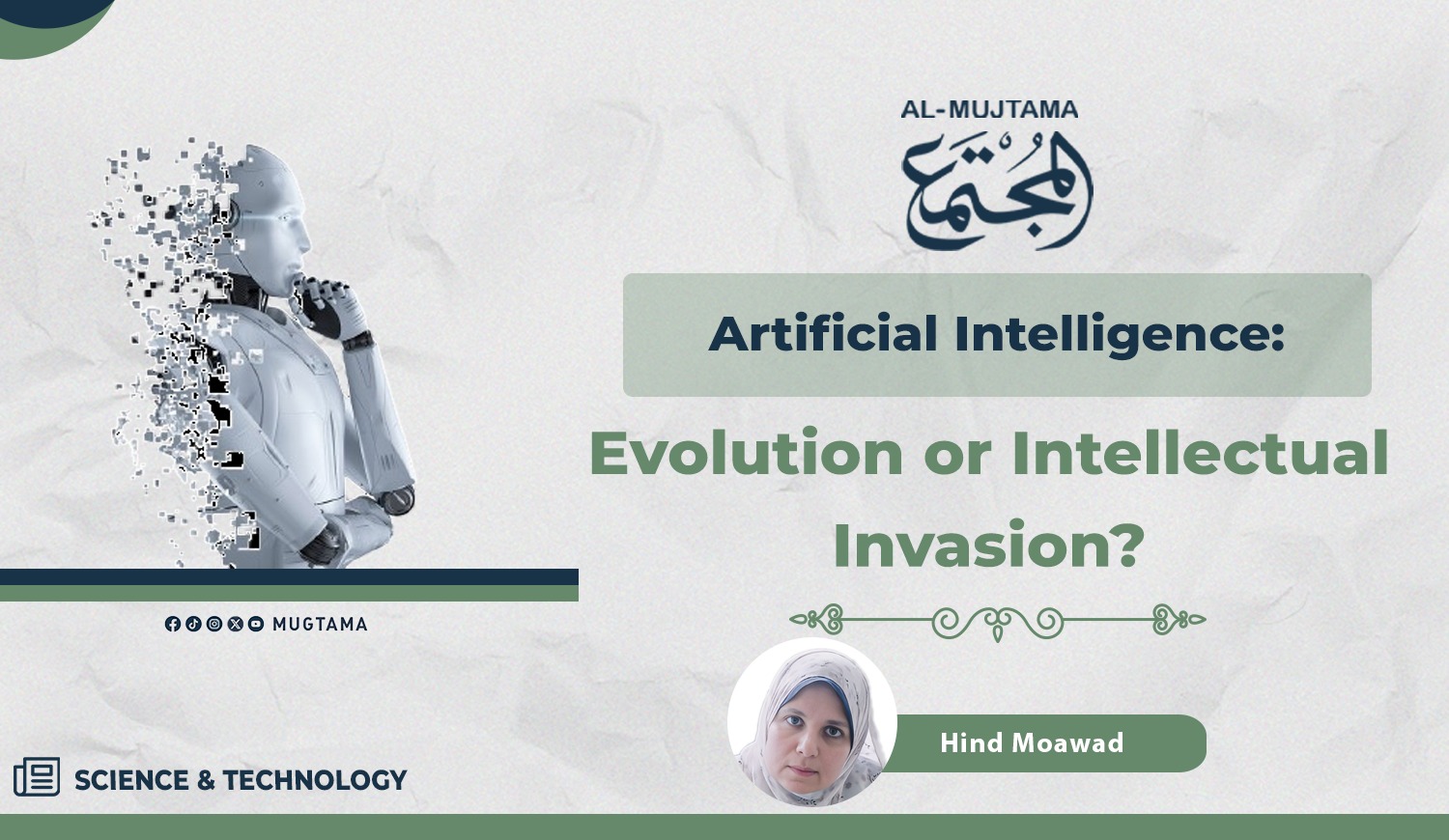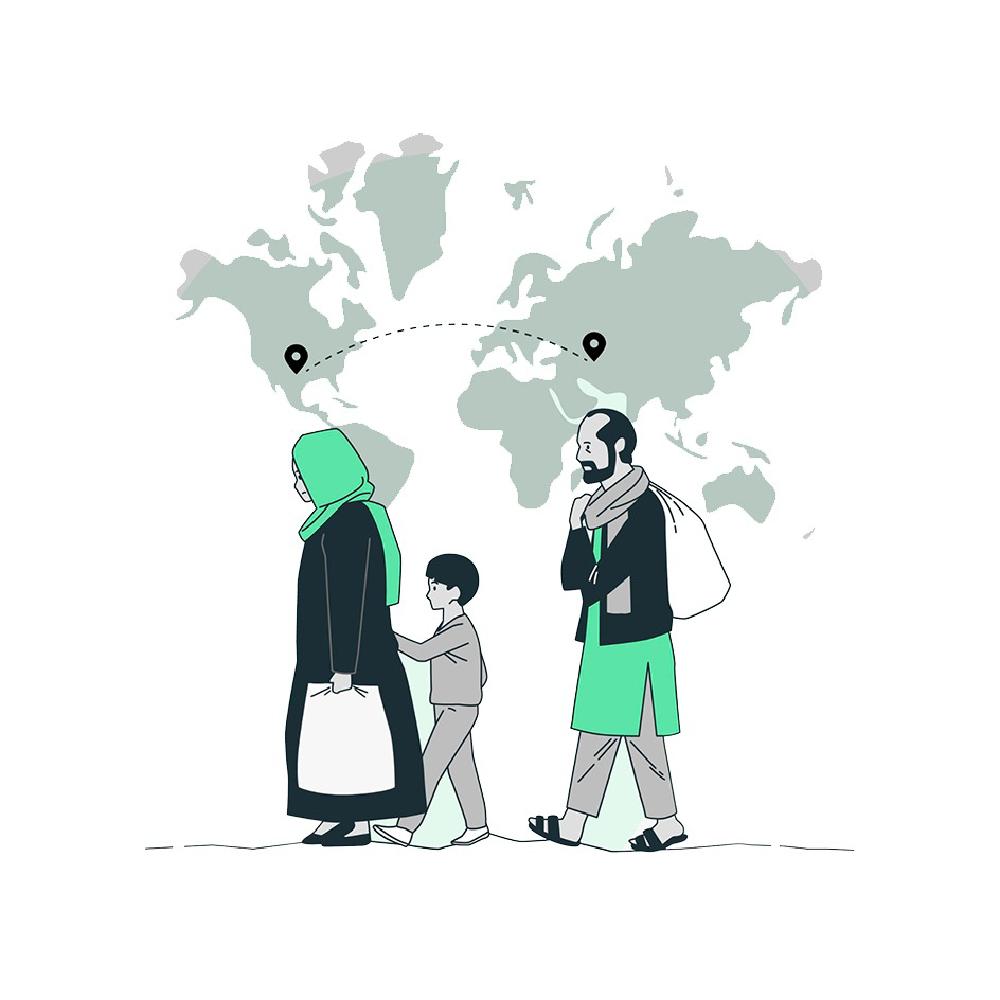Navigating the AI Frontier
Artificial Intelligence: Evolution or Intellectual Invasion?

The world is witnessing rapid technological advancements, and a prominent feature of this development is the recent emergence of Artificial Intelligence (AI) applications. These applications are among the most controversial topics, especially given their widespread adoption across all communities, social strata, and age groups.
Due to the powerful impact of AI on various aspects of human
and social life, people have divided into two camps. One sees it as a natural
evolution of the modern technological revolution, serving humanity and solving
its problems. The other views it as an intellectual and cultural invasion,
eroding consciousness, threatening identity, and replacing humans in many tasks
and jobs, thereby endangering their lives and livelihoods.
This article attempts to explore the question: What is AI? Is
it a technological advancement that supports human life, or an intellectual and
cultural invasion that endangers it?
What is Artificial Intelligence?
Artificial Intelligence is a scientific field dedicated to
designing and developing systems and computers capable of simulating human
cognitive abilities. The term "Artificial Intelligence" originated in
1956 at a scientific conference at Dartmouth College. One of AI's
founding fathers, Marvin Minsky, described it as "the science of making
machines do things that would require intelligence if done by men."
However, modern AI systems have evolved to demonstrate
problem-solving capabilities for tasks such as visual perception, speech
recognition, planning, decision-making, and language translation. They can
process terabytes of data and insights in real-time, proving themselves to be
flexible and responsive technologies that augment human users' capabilities and
increase efficiency, productivity, and workplace satisfaction.
Thus, we see that AI has powerfully permeated every field,
offering humans a better life while simultaneously posing a threat to their
jobs and livelihoods.
A Stunning Scientific and
Technological Revolution
The integration of Artificial Intelligence into human life
represents an enormous scientific and technological advancement. It has entered
numerous fields, with all ages, groups, and specializations embracing it from
the perspective that it can solve complex problems and simplify human life in
many ways. It has also been used in various fields and jobs to achieve the
fastest and best results, including:
- Education: AI
is used to enhance education and provide a distinguished and engaging
learning experience for students through educational games, virtual
laboratories, and other tools. AI can also automate repetitive
administrative tasks for teachers, such as grading exams and preparing
reports. Furthermore, remote learning programs offer educational
opportunities for students with special needs and those residing in
distant and remote areas. AI programs analyze all student performance
data, no matter how large, saving teachers effort and time and helping
them make decisions related to curriculum development and student support.
- Medicine and Healthcare: AI
applications have strongly penetrated the healthcare sector, used in
diagnosis, treatment, and palliative care, as well as analyzing medical
image data. This aids in accurate diagnosis and disease identification,
consequently determining appropriate treatment and developing treatment
plans.
- Industry: AI
programs have entered the industrial sector, contributing to equipment
monitoring and development, implementing measures for worker safety and
security, identifying hazards to guide workers in avoiding them, and
determining the most important methods for ensuring quality and efficiency
in work.
- Transportation: The
field of transportation is one of the areas that AI programs have reached
and developed to improve safety and transport efficiency, contributing to
reducing road accidents and enhancing the driving experience.
- Marketing: AI
programs have worked to improve customer experience and increase sales by
using AI to identify advertisements tailored to customers based on their
interests or to identify products they might purchase through data
analysis.
- Financial Services: Banks
and investment companies use AI programs to analyze data, make sound
financial decisions, and prevent fraud.
From the above, it is clear that AI has permeated all aspects
of human life, contributed to their development, and provided successful
experiences that lead humanity to progress and innovation in several fields,
representing a tremendous digital technological revolution. However, doubts are
increasing about these programs, with some considering them a threat to humans
and a replacement for their roles in many areas, as well as an intellectual and
cultural invasion that threatens identity and constants.
An Intellectual and Cultural
Invasion Threatening Identity and Constants
While we cannot deny the invaluable services AI has provided
to humans across all walks of life, it also carries significant intellectual
and cultural threats.
- Machine Overreach and Threat to Values and Identity: One of the biggest growing concerns about the
spread of AI programs is the fear of machines overreaching and dominating
societies, and consequently controlling human lives, weakening human
mental capacities, and the absence of critical thinking. Furthermore,
there are concerns about directing humans according to specific trends and
theories, leading to a weakening of human cultural identity and the
disappearance of many human constants and values. This represents an
intellectual and cultural invasion that threatens human minds, identity,
and culture.
- Control over the Labor Market: One
of the most alarming concerns for humans regarding the expanded use of AI
programs is their direct impact on traditional jobs and the displacement
of human labor from many professions as machines take their place.
Consequently, many traditional professions will disappear, and new
professions and jobs requiring new skills not widely available in the
labor market will emerge. This will create a digital divide between
available and required jobs, increasing unemployment and shrinking
employment opportunities.
Can Humans Achieve Balance Between
Benefit and Threat?
With increasing concerns about the spread of AI programs and
their penetration into all fields bringing development and innovation, it is
imperative to understand that these programs are a vital tool that encompasses
both good and bad. The solution lies in using them wisely to serve humanity and
achieve good and progress. Therefore, humans must strive diligently to achieve
a balance between their fears and the desired benefits from using these
programs. This involves continuous efforts to acquire new skills that align
with labor market demands, as well as developing these programs to conform to
human values and constants, and working to develop them to bring good and
comfort to humans. It also requires enforcing strict laws governing the use of
AI programs and preventing their abuses. By doing so, these programs can
transform into a means of revival and construction, bringing good to all
humanity.











